My apologies for the slow posting. I am reading Matthew McAllester's book "Blinded By the Sunlight". It's a great read.
I note on the Amazon sight that people either loved it or hated it. I think the people that hated it were looking for some sort of non-fiction analysis of Saddam's Iraq or the war. Instead, the book is about McAllester's personal experience in the prison system of Saddam's Iraq; what he saw and what he felt. It is what most of us imagined and possibly worse. I will give you more of a review after I read it.
Interesting points so far is that the mood of Baghdad Iraqis swings back and forth from rooting for the Americans (however, privately and quietly) to rooting for the regime when they feel that it is taking the American's too long to come so they decide that they will not be released from prison and it is better to root for the devil you know just in case he finds out you harbored secret joy for his over throw.
It thought this was interesting because it seems to be the same attitude that is repeated over and over even after the regime fell. Rebuilding is not quick enough. Insurgents are not stopping quick enough. Law and order is not quick enough. Jobs are not quick enough. Etcetera, etcetera...
Based on McAllester's take it is largely about people being free for once and believing that the regime change will magically change their lives, like a fairy godmother who sees, knows and does all with the flick of her wand. And, from this perspecitve, it is understandable.
McAllester was not the only reporter taken prisoner, by the way.
Saturday, October 29, 2005
Blinded By the Sunlight
Posted by Kat at 2:25 AM 1 comments Tweet
Thursday, October 27, 2005
Freedom: Priceless
What is the value of freedom? Is it like a shirt that you see on a clothes rack and, seeing the price tag, you put it back, looking for a less expensive shirt? While you may make do with a less expensive shirt, can you make do without your freedom or with lesser freedom or none at all? If freedom is too expensive, is it better to live in slavery?
Our fore fathers understood that people in all situations put up with much in order to maintain what little comfort that they have:
Prudence, indeed, will dictate that governments long established should not be changed for light and transient causes; and accordingly all experience hath shown that mankind are more disposed to suffer, while evils are sufferable than to right themselves by abolishing the forms to which they are accustomed.
Does the value of freedom go up and down depending on who’s freedom is in question? Is the freedom of one person more valuable than the freedom of his neighbor? If you were free and your neighbor was not, would you pay the same price for his freedom as you paid for your own? If you were told that your freedom would cost you $100 and your neighbor $500, would his freedom be too expensive? If it cost you no money, but you had the key to your neighbors prison, would you risk your life to give him that key or would you place it somewhere near by and tell him that, if he can figure out how to retrieve that key from his prison cell, he can have it, the cost little or nothing to you?
What if you decided that you would risk your life for his freedom and, in the course of doing so, you died? Was his freedom too expensive? Was the value of his freedom diminished by the price of your blood or did it increase knowing what it cost? If three men gave their lives for one man to be free, is his freedom now diminished by their cost or increased?
What if it wasn’t your neighbor, but was you mother, father, sister, brother, wife and/or children? Does the value of their freedom increase with the proximity of their relation to you? Would you give more for their freedom than the man down the street, across the border or an ocean?
If we apply diminishing value based on proximity and relation, then what value is our own freedom to a man on the other side of the street, much less on the other side of the ocean?
They say that freedom isn’t free. I assert here that neither is it free nor can a value be placed upon it. It cannot be measured by money, possessions or even the amount of blood that is spilled to attain it. If we place a value on it based on any of these things, what then is the value of our own freedom? If we place a limit on the value of our own freedom or on another man’s, then we have declared a price that will surely sell that freedom cheaply.
They tell you that 2000 men and women have died in Iraq. They call it a “grim milestone”. Others have set up protests, pretending to mourn, yet seemingly counting the dead gleefully as if they were misers counting their gold in the window while men walk by in chains.
You may ask, what is the value of each man or woman who sacrificed his or her life? No value can be set because their lives were priceless. They had a value that no accounting method could ascertain. That value was increased by every generation that came before them that lived free or fought for and died for freedom, whether that freedom was their own or a man across the ocean. Whoever should die in that cause, from the first to the last, increases the value of freedom more than ever could be counted.
Do not be fooled by false accounting. Today, we walk free. We walk free because millions have given their lives over 200 years to buy it and keep it. Who among us would say that the cost was too high?
But, they say, this was not a war of liberation, but a war of aggression. By who’s accounting? The freeman walking in the street with an anti-war protest sign or the free woman casting her ballot for the second time in the place that was liberated?
Not only is the value of our freedom increased with the death of every freeman, it is increased again with every man that walks free. Tomorrow, 2001 men and women will have died to provide security to the free citizens of the United States and give freedom to 25million people, 9000 miles away. The value of their freedom will have increased by one more priceless life and the value of our freedom will have increased by 25 million.
Tomorrow, people will still be counting the dead. They will tell you that the price of freedom is too high when that cost is our best and bravest, especially if it is the freedom of a brown skinned man 9000 miles away.
I will tell you when the last man, woman and child are free and we count the dead, we will not say that the cost was too much.
I will tell you that freedom isn’t free; it’s priceless.
Posted by Kat at 8:16 PM 2 comments Tweet
Tuesday, October 25, 2005
Broken Chains
For every historical period, there is a person, place or thing that represents that moment above all others. It's the icon. And, when you say the name, everyone knows what you mean. In a nano-second, words and pictures are formed in our minds that instantly recall what it means.
Rosa Parks was an icon.
Woman
Black
Bus
Back
Boycott
Birmingham
March
Freedom
What has always inspired me the most about the Rosa Parks story is that she was no great politician, no activist; she did not spend a lifetime trying to change her situation. She was a woman in a moment in time where the physical shackles had been removed, but mental and social shackles remained. Still, she simply got up every day and went to work, doing what she had always done, until the day that she said, "No." That was it. No grand speech about freedom or rights or expensive rubber chicken dinners listening to the latest and greatest social change guru. Just the word "no" and it changed the world.
Social activists will search their entire lives looking for their own Rosa Parks moment, hoping to change the world. In general, one must admit that social activism can help move the world in a different direction, but it is a slow change. That sort of activism does not create iconic moments. Iconic moments require spontaneity, a deep fire that erupts from a common unexpected source.
Throughout the history of the United States, there are people, phrases, images and moments in time that expresses the penultimate moment when the next phase of freedom is recognized. They stir us to greater deeds and remind us to keep looking forward, never going back.
Give me liberty or give me death. We might not always remember who said it (Patrick Henry), but we remember his words and we know what he meant. Four score and seven years ago...every child learns that speech even if they don't know what "four score" meant (a score is 20 years; 4x20=80); they know that it was written in a war that freed the slaves. A day that will live in infamy, we know that day by the time we are adults we have internalized what day that was, who said it, what it meant to the future we live in and we know the images. Ask not what your country can do for you; ask what you can do for your country. JFK's inaugural speech. Mr. Gorbechav, tear down this wall. We know what wall Ronald Reagan meant. It was a physical wall that represented the figurative wall that imprisoned people.
These things, along with many others, we remember, we internalize, we digest and they have become the program by which we learn what it means to be free and to live in America. Always believing that this freedom is the greatest, not because we simply are born into and live it, but because we are reminded constantly and consistently of the struggle that it took to arrive here. These also remind us that the struggle for freedom is never done. There is always another step we can climb and there are always people living in slavery. We recognize the eternal struggle of the human race that there is always a person struggling to be free and there is always another who will struggle to keep him, or her, a slave, whether that is physically, mentally, economically or politically. This struggle continues because we are not, by our higher mental power, immune to Darwin's theory of survival of the fittest. We choose to struggle against it.
In his inaugural address in 2005, President Bush used a phrase: Freedom is the fire burning in the minds of men. I don't know yet if that will become the iconic phrase of our generation, but I know that it struck me as very important and very deep. From our American history, we know that this is true. We're raised to believe it. People from all nations look to this nation; come to this nation, sometimes at a great personal cost, in order to experience this freedom. That is even knowing that we were never perfect. They recognize that it is better to struggle in imperfect freedom than to be bound by chains.
It is a difficult concept for people to understand. We have been raised to look upon other cultures as new and wonderful places to experience. They are, but too often, this exploration is at best superficial. We are told that when we look upon these places and these cultures that we, having not grown up in these cultures, cannot apply our own experiences and judge whether that culture and that way of life is better or worse. It is only different.
Yet, people routinely leave these cultures to come here. Why?
I believe that there is something wrong with the idea that we cannot judge a social structure or culture because it is not our own. I believe that the failure in this concept is the failure to recognize, even in a culture where class, servitude and even slavery has existed for generations, a man cannot be chained to the side of the road watching another man walk down it freely and not recognize the difference in their condition, regardless of how long he may have been chained there or who has told him that is his position.
Conversely, a man walking down the road freely, seeing his fellow man in chains, must also be able to recognize the difference in their condition and consciously makes a choice whether he will act on the man's behalf or go on, enjoying his own freedom. I'd say that the man who walks by his chained brother finds his own enjoyment of freedom diminished because he may pretend otherwise, but he saw that man's condition and it is always a picture in the back of his mind, a reminder that, but for the grace of God, go I and he must, from that moment on, always fear that his condition may change and he will be the man chained on the side of the road.
As for the charitable soul that gives the chained man bread and water, a blanket to sleep upon and a book to while away his hours yet does not take the shackles from the man, what have they given that chained man but a moments relief and a reminder that he is not free? And that same charitable soul turns away and continues on, thinking he has done a good deed. Unless the book held the key to the shackles, the food, water and blanket only sustain the chained man longer in his prison. What greater deed could there have been had the free man simply reached out his hand and pulled his fellow man from his chains or, even if necessary, came back with a sledge hammer and broke the chains?
Some men have been chained so long in their condition that they do not recognize that the chains that hold them are rusted and weak. He does not realize that, today, he could get up and break the chains and walk with his fellow man down the road of freedom. But, as we have seen through out history, it only takes one man to stand up and lose his chains to inspire the people around him to do the same. Then, suddenly, whole peoples are free.
Rosa Parks, by refusing to leave her seat and go to the back of the bus, tested her chains and found them broken. She stood up and all around her men and women stood up and broke the mental chains that had held them there for so long on the side of the road.
We see that today, men and women all around the world are standing up, breaking their chains no matter how long they have lived in chains or who has told them that is their inherent condition. They defy this inherent condition. They defy the tyrant’s chains. They defy the free man that saw them chained and walked on doing nothing. They defy the charitable soul who only offered comfort, but left them in their chains.
Today, we have seen free men wield a sledgehammer and break the chains of their fellow man. All the while, other free men tell him that he should not do that. If they free all these men, the road of freedom will be clogged with people. They tell you that, because of their culture or because these men choose to live in chains that they do not want to be free or it is better that they learn how to free themselves, thus appreciating that freedom even more. From this perspective, it's a weak excuse to do nothing. It is an inability for the free man to recognize the difference in his and the chained man's condition. It is the inability of the free man to recognize that the chained man understands the difference in their respective conditions and would gladly trade places with such a noble culturalist. Or, it's simply an excuse to do nothing, conserving his energy for his own walk so that he can pretend that doing nothing is equal to the man who breaks the chains.
I am reminded, when I hear such culturalist speak, of the people from Rosa Parks' days who touted "separate, but equal". That there should be separation between the culture of the black and the culture of the white. Ostensibly so neither would be unduly affected by the other. However, we now know that their conditions were definitely "separate", yet they were never "equal". That is a lesson that we must learn over and over again as we pass by each chained man beside the road of freedom and decide whether we will walk on or give him our hand. We imperfect free have alternately chosen to do both at different times in history. Ultimately we have chosen to give a hand or wield a sledgehammer when we feel that the chains of tyranny have come to close, when we feel our own freedom is most threatened.
Is it not strange how free men have congratulated themselves for walking by and doing nothing? That's why we need icons like Rosa Parks, why we constantly need to be reminded of this lesson. There is nothing equal in a free man and a chained man's condition no matter where he lives in the world, what language he speaks, what God he worships, how he drinks his tea, wears his clothes or who tells us it is so.
Free is free; chains are chains and chains are meant to be broken.
On October 24, 2005, Rosa Parks broke her final chains. God's speed, dear lady. You will be remembered.
Posted by Kat at 11:28 AM 2 comments Tweet
Monday, October 24, 2005
Body Armor Part III: Contours, Weight and Strength
 By 1066, Roman segmented armor had disappeared. What survived was the chain mail that the Romans had adopted from the Celts over a thousand years earlier. A chain mail hauberk, as seen on the left, could weigh between 40 and 80 pounds depending on the length and whether the chain was single or double. Chain mail gave good coverage against slashes and thrusts. It stayed close to the body so it allowed the widest range of motion for arms and legs.
By 1066, Roman segmented armor had disappeared. What survived was the chain mail that the Romans had adopted from the Celts over a thousand years earlier. A chain mail hauberk, as seen on the left, could weigh between 40 and 80 pounds depending on the length and whether the chain was single or double. Chain mail gave good coverage against slashes and thrusts. It stayed close to the body so it allowed the widest range of motion for arms and legs.  Swords of the time were modeled after the viking sword. Knights had learned not to sharpen their swords into fine edges because the iron would not hold the edge and it routinely broke against shields and chain mail. Instead, the sword acted largely as a blunt object that could bludgeon a warrior to death or knock him down in order for his opponent to deliver the coup de gra' thrusting the pointed end of the sword in the face opening, into the groin area or simply bludgeoning his head in. Any amputation or deep penetrating wounds could be more contributed to by the heft of the sword and the power of the warrior swinging it.
Swords of the time were modeled after the viking sword. Knights had learned not to sharpen their swords into fine edges because the iron would not hold the edge and it routinely broke against shields and chain mail. Instead, the sword acted largely as a blunt object that could bludgeon a warrior to death or knock him down in order for his opponent to deliver the coup de gra' thrusting the pointed end of the sword in the face opening, into the groin area or simply bludgeoning his head in. Any amputation or deep penetrating wounds could be more contributed to by the heft of the sword and the power of the warrior swinging it.
The two main types of wounds that warriors suffered with this armor were blunt force trauma and penetrating wounds from arrows. Even with double chain an arrow could penetrate the coat of mail taking pieces of the armor with it. If the warrior didn't die of a direct wound to an organ, he would most likely die from infection caused by the material of his tunic, chain mail and any dirt that followed the arrow in. Then there was the open face of the armor itself. In 1066, King Harold was killed by a Norman arrow that struck him in the eye.
To combat the effects of blunt force trauma and penetration by arrows, armorers began to experiment with different armor techniques. First they added padding behind the chain mail hauberk. The padded, quilted long shirt was called a gambeson. This helped disipate the force of a blow by first pushing the chain mail out so that it was "stiffer" and the rings locked to add resistance. Then, the padding itself absorbed the energy of the blow. Of course, this added weight and had some issues with mobility. It also did not protect well against penetration by arrows.
Next armorers developed bar armor that was usually sown to a leather backing and covered with the cloth of a surcoat or leather. This was often worn over the top of the chain mail to provide protection against penetrating wounds from arrows, thrusts from swords and, along with the padded gambeson, eliminated some blunt force trauma injuries from swords. Appendages were still vulnerable though chain hauberks had been extended to cover the arms and legs.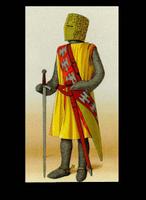
The bucket helmet no longer deflected blows, but the shape allowed the head to be hit without significant penetration, however, a knight could still be knocked silly. The "folds" in this knights surcoat aren't folds at all but bars of iron sewn vertically into the front of the surcoat to provide extra protection. Sadly, this knight saw new weapons enter the battle field.


 The bodkin arrow head was stronger and could penetrate armor. The mace and the flail could both cause extreme blunt force trauma even to the head covered by the new improved bucket helmet and the two handed great sword had new improved tempering and hardening methods creating a stronger sword. The "blood groove" allowed some weight to be removed from the sword while maintaining it's strength and balance. The sword could be between 4 and 6 feet. This sword could actually hack off limbs and heads. These new weapons meant that chain mail and bar armor had been out stripped by the weapons manufacturers once again.
The bodkin arrow head was stronger and could penetrate armor. The mace and the flail could both cause extreme blunt force trauma even to the head covered by the new improved bucket helmet and the two handed great sword had new improved tempering and hardening methods creating a stronger sword. The "blood groove" allowed some weight to be removed from the sword while maintaining it's strength and balance. The sword could be between 4 and 6 feet. This sword could actually hack off limbs and heads. These new weapons meant that chain mail and bar armor had been out stripped by the weapons manufacturers once again.
What were the armorers to do? They needed better coverage without sacrificing mobility and strength. On the other hand, the weapons were now so dangerous that a small amount of speed could be sacrificed to gain survivability. By the time of the Black Prince, plate armor had become a common site on the field of battle. Armorers began to use the hardening and tempering methods first used for swords, transfering the technique to plate armor. The armor was still quite heavy, but provided the most protection yet from arrows and blunt force trauma to the torso. To lighten the weight of the plate armor and add strength, armorers began to bend the armor. As can be seen by the armor in the prince's effigy, the breast plate created a shell that tapered in towards the waist. The curve of the shell helped deflect blows, disipated the impact (and energy) of a blow over a wider area and kept the impact at least two inches away from the knight's body. The tapering at the waist allowed some of the weight of the armor to be distributed from the shoulders to the hips. Beneath this tapered waist, unseen due to the surcoat worn over the armor, was an articulated bell "skirt" that protected the groin, hips and thighs. Plate armor was also used to develop vambraces for the forearm, gauntlets for the hand and articulated shoulder, leg and knee protection.
By the time of the Black Prince, plate armor had become a common site on the field of battle. Armorers began to use the hardening and tempering methods first used for swords, transfering the technique to plate armor. The armor was still quite heavy, but provided the most protection yet from arrows and blunt force trauma to the torso. To lighten the weight of the plate armor and add strength, armorers began to bend the armor. As can be seen by the armor in the prince's effigy, the breast plate created a shell that tapered in towards the waist. The curve of the shell helped deflect blows, disipated the impact (and energy) of a blow over a wider area and kept the impact at least two inches away from the knight's body. The tapering at the waist allowed some of the weight of the armor to be distributed from the shoulders to the hips. Beneath this tapered waist, unseen due to the surcoat worn over the armor, was an articulated bell "skirt" that protected the groin, hips and thighs. Plate armor was also used to develop vambraces for the forearm, gauntlets for the hand and articulated shoulder, leg and knee protection.
Certain areas still remained vulnerable to piercing: the under arm, the neck and the back of the leg. The helmet and coif did little to protect against blunt weapons like a mace or war hammer. The new improved great sword could still cut an arm or a leg off when wielded properaly and a short sword or dagger would be thrust into the other vulnerable areas. 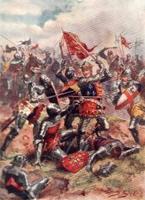 The English archers at Agincourt used this vulnerability to their advantage, unhorsing the knights by killing or wounding their horses and then knocking the knight to the ground if they weren't outright killed by an arrow. Once they were on the ground, the archers beat them upon the head or slashed the backs of their legs to immobilize them. Then, holding the knight's arm out and thrusting into the arm hole on the armor to puncture lungs, heart and cut arteries or pushing a dagger into the face opening of the coif, thrusting down until they had cut the carotid artery. Sometimes a dagger or sword would be thrust under the coif from the bottom or even under the bell hoop of the armor into the groin. In most cases, if the knight was not lucky enough to have his brains beat out with a mace or club, he bled to death in minutes, and occasionally hours, lying on a muddy, bloody field.
The English archers at Agincourt used this vulnerability to their advantage, unhorsing the knights by killing or wounding their horses and then knocking the knight to the ground if they weren't outright killed by an arrow. Once they were on the ground, the archers beat them upon the head or slashed the backs of their legs to immobilize them. Then, holding the knight's arm out and thrusting into the arm hole on the armor to puncture lungs, heart and cut arteries or pushing a dagger into the face opening of the coif, thrusting down until they had cut the carotid artery. Sometimes a dagger or sword would be thrust under the coif from the bottom or even under the bell hoop of the armor into the groin. In most cases, if the knight was not lucky enough to have his brains beat out with a mace or club, he bled to death in minutes, and occasionally hours, lying on a muddy, bloody field.
Two weapons on this field would turn the history of armor once again.  The French used crossbows on the field of Agincourt. The problem here was that the crossbow as not much for distance. At a hundred yards or less it could send a bolt through plate armor. At greater distances accuracy would fail but a bolt could still be lodged in the vulnerable neck, armpit and back's of legs not covered by plate armor. As an anti-siege weapon, it was very effective.
The French used crossbows on the field of Agincourt. The problem here was that the crossbow as not much for distance. At a hundred yards or less it could send a bolt through plate armor. At greater distances accuracy would fail but a bolt could still be lodged in the vulnerable neck, armpit and back's of legs not covered by plate armor. As an anti-siege weapon, it was very effective. 
The English, on the other hand, made great use of the longbow. It had the advantage of distance and, fired en masse, 1500 archers could deliver an estimated 9000 arrows on target within a minute (6/min) at distances of 300 yards. At 100 yards or less, the longbow was as deadly as it's step child the crossbow. The only difference was that crossbowmen needed little training to operate their weapon and longbow archers perfected theirs over years. Crossbows also took longer to "re-load". The hoop like structure on the crossbow above was for the archer's foot. Holding the crossbow in place, he would pull the string back to lock, bring it up, place a bolt, bring it to his shoulder, aim and fire. A good crossbowman might get off 3 to 4 shots in a minute.
The danger lay in the penetrating power of these weapons. With new and improved arrow heads, they were absolutely deadly. For the armorers it was back to the drawing table. Enter the fully armored knight. Armorers were once again tasked with creating a stronger, lighter and more fully protective suit of armor. By the time of this late 15th century armor, the techniques of hardening and tempering iron into steel were fully developed. The new armor plates were extremely strong. This meant the armor could be thinner and lighter. the armor plate on this suit of armor could be beaten into a 1/4" or less. To stengthen and lighten the armor even more, the armor was contoured and fluted. The convex shape of the breast plate distributed energy and force of the blow as well as kept the blow far away from the knights torso. The fluting provided additional strength while removing some of the metal from the plate, lightening the weight considerably while still maintaing good coverage from penetration.
Enter the fully armored knight. Armorers were once again tasked with creating a stronger, lighter and more fully protective suit of armor. By the time of this late 15th century armor, the techniques of hardening and tempering iron into steel were fully developed. The new armor plates were extremely strong. This meant the armor could be thinner and lighter. the armor plate on this suit of armor could be beaten into a 1/4" or less. To stengthen and lighten the armor even more, the armor was contoured and fluted. The convex shape of the breast plate distributed energy and force of the blow as well as kept the blow far away from the knights torso. The fluting provided additional strength while removing some of the metal from the plate, lightening the weight considerably while still maintaing good coverage from penetration.  It's at this point that the arms race speeds up considerably. This crossbow shows a winding handle used to pull the bow string back. That's because the cross section is now made of a thin, highly flexible steel that allows a bolt to be fired that can still penetrate the new plate armor at 100 yards or less. Unfortunately for the archer, he is lucky if he gets off two arrows in a minute or before the well armed knight cuts him down.
It's at this point that the arms race speeds up considerably. This crossbow shows a winding handle used to pull the bow string back. That's because the cross section is now made of a thin, highly flexible steel that allows a bolt to be fired that can still penetrate the new plate armor at 100 yards or less. Unfortunately for the archer, he is lucky if he gets off two arrows in a minute or before the well armed knight cuts him down.  Theopen field now belongs to the medieval tank. In response, the infantry develops long spears to use in a phalanx to break up charges.
Theopen field now belongs to the medieval tank. In response, the infantry develops long spears to use in a phalanx to break up charges.  The halberd is equally dangerous. The hook on the back is used to grab an armored knight and pull him to the ground. The steel spear can thrust through the plate armor or into vulnerable areas (still around the groin and arm pit). Other hooked weapons of the period resemble a can opener for good reason. The only way the infantry is going to kill this knight is up close and personal.
The halberd is equally dangerous. The hook on the back is used to grab an armored knight and pull him to the ground. The steel spear can thrust through the plate armor or into vulnerable areas (still around the groin and arm pit). Other hooked weapons of the period resemble a can opener for good reason. The only way the infantry is going to kill this knight is up close and personal.  Even a knight on the ground is well enough covered that a foot soldier will have to fight him to exhaustian or find a way to put him and keep him on the ground so the foot soldier or a compatriot can open up the armor or expose the two remaining vulnerable areas (armpit and groin). An ingenious tool for this chore is the attrape coquin, aptly translated as the "rascal catcher". This device will grab an armored man around the neck and then the foot soldier uses the length of the staff as a lever to pull the man down. The footsoldier is still at a distinct disadvantage until he gets two new weapons:
Even a knight on the ground is well enough covered that a foot soldier will have to fight him to exhaustian or find a way to put him and keep him on the ground so the foot soldier or a compatriot can open up the armor or expose the two remaining vulnerable areas (armpit and groin). An ingenious tool for this chore is the attrape coquin, aptly translated as the "rascal catcher". This device will grab an armored man around the neck and then the foot soldier uses the length of the staff as a lever to pull the man down. The footsoldier is still at a distinct disadvantage until he gets two new weapons: The arquebus...
The arquebus... ...And the cannon.
...And the cannon.
In the beginning, cannon are largely used as siege machines to break down walls of cities or fortresses. They aren't particularly accurate and the exploding round has not been developed. Use against infantry or knights is relatively useless until the mid to late 17th century. The arquebus has a similar problem. It's accuracy leaves much to be desired, but it's impact will change the face of warfare forever.
Within 100 years of the siege of Boulogne (pictured on the right), the fully armored warrior disappears forever.
Or, does he? In 1942, an English Major proposes providing bomber crews with chain mail armor covered by cloth to protect them against AAA flak. In 1943, a flight surgeon, Col. Malcom G. Grow is awarded the Lefion of Merit for his role in developing the flak jacket that will protect American bomber crews. This flak jacket is comprised of steel plates covered by canvas. Bomber crews wear modified steel helmets and heavily padded jackets, pants, gloves and boots to protect them against the cold.
In 1942, an English Major proposes providing bomber crews with chain mail armor covered by cloth to protect them against AAA flak. In 1943, a flight surgeon, Col. Malcom G. Grow is awarded the Lefion of Merit for his role in developing the flak jacket that will protect American bomber crews. This flak jacket is comprised of steel plates covered by canvas. Bomber crews wear modified steel helmets and heavily padded jackets, pants, gloves and boots to protect them against the cold.
The military "discovers" fiberglass and the new armored vests are sent to Korea. The quarter master reminds everyone that the vests are for stopping fragments and shrapnel, not bullets. There are no "bullet proof vests" because they would be too large and bulky. In 1965, Dupont creates Kevlar16. A new vest is created using 24 layers of kevlar and is reported to stop magnum size loads. Unfortunately, it still cannot stop a high powered rifle bullet. In 1982, a ceramic aluminum oxide plate is added to the vest and the layers of kevlar are reduced, reducing the over all weight to approximately 25lbs.
In 1965, Dupont creates Kevlar16. A new vest is created using 24 layers of kevlar and is reported to stop magnum size loads. Unfortunately, it still cannot stop a high powered rifle bullet. In 1982, a ceramic aluminum oxide plate is added to the vest and the layers of kevlar are reduced, reducing the over all weight to approximately 25lbs.  enter the interceptor. It weighs 16.5lbs including 8.5lbs of kevlar vest and 4lbs each (2) of Spectra re-enforced boron carbide ceramic plates (not including groin and arm protection). It can take between 5 and 7 AK 47 7.62mm rounds before shattering the plate.
enter the interceptor. It weighs 16.5lbs including 8.5lbs of kevlar vest and 4lbs each (2) of Spectra re-enforced boron carbide ceramic plates (not including groin and arm protection). It can take between 5 and 7 AK 47 7.62mm rounds before shattering the plate.
What can modern armor manufacturers and the Natick Soldier Systems Center learn from this history?
It's not necessary to re-invent the wheel to provide good protection for a warrior. In reality, only the materials change. The practical shapes and engineering remain the same.
New materials can often allow new designs in creating armor, but old engineering of past armor can play a significant role in speeding up the process of creating new armor. In this case, convex shapes, contours and fluting can improve the strength of hardened materials while simultaneously decreasing the weight through reduction of materials. It may be possible to decrease blunt force trauma and increase the durability of modern ceramic plates by exploring new shapes. These new shapes, contouring and fluting, could be transferred to leg and arm protection. It may even allow the helmet to change and allow additional armor to be carried by the soldier.
Considering some of the issues confronting the ceramic plates, it might be an opportune time to investigate these techniques.
Or, they can ask... The Greeks
The Greeks The Romans
The Romans And the knight.
And the knight.
Or maybe they should ask...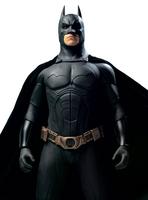 ...Batman. His armorer seems to know what he's doing.
...Batman. His armorer seems to know what he's doing.
Stay tuned for part four: What the Greeks, the Romans and the Medieval knight knew about saving Ryan's privates.
Posted by Kat at 7:54 AM 2 comments Tweet
Friday, October 21, 2005
Body Armor Part II: Romans, Weight Distribution and Armpits
In Part I we reviewed the historical evolution of body armor with images of body armor over the centuries. In this section I wanted to review why body armor changed and what those historical changes might mean to developing body armor for the modern warrior.
With each successful attempt at reducing harm to the individual warrior, the opposing force has always spent an equal amount of time figuring out how to defeat that protection.
Equally, armorers spent as much time trying to counter each evolution of new or improved weapons. Of equal import was the type of injuries that could be sustained in battle:
Third, the type of wounds that can be suffered do not change. They can be broadly classified into three types: blunt force trauma, penetrating wounds and amputation of limbs.
Along with each of these advancements in armor and weapons, additional advancement in general tactics and even in medicine or treatment of wounds and their perceived survivability had an effect on what was deemed most important for effective protection of a warrior. At some points in history, armor nearly disappears and then reappears again only to be "re-invented" with new materials, making the same long and sometimes agonizing journey to it's last, latest and greatest form. This was alternately (and sometimes simultaneously) due to collapses of civilization which forced technology back centuries; the advancement of weapons and tactics that warriors felt precluded effective armor; the cost factor.
Take for instance the period between the French Cuirassier and the World War I soldier with a simple steel plate in a bag around his neck to protect his chest.

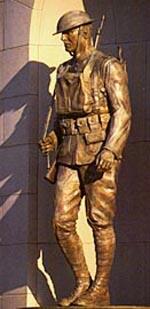
That is one hundred years without any real advancement or use of personal body armor for soldiers. Why? Weapons and tactics. By the time of the Napoleonic Wars, hundreds of thousands of men could be amassed in lines with muskets with a ball or amunition size and velocity that could now easily and relatively cheaply penetrate armor. Add to that volley fire en masse and even an armored cavalry charge could be devestated. Why go to the expense of armor if it was not effective? Instead, the cavalry changed it's tactics to include flanking manouvers and charges timed with artillery and infantry. The same went for the infantry: no need for armor when muskets at close range made it moot.
By the time breachloading and repeating rifles and pistols came on to the field, any consideration for armor had been all but relegated to a past time for military equipment research and development. Most of the time was spent on how to make weapons even more effective. In short, the arms race seemed to have left armor far behind. Why did it make a reappearance in World War I?
There were multiple reasons. During the Napoleonic Wars, the first real ambulance and field hospitals had been created. By the American Civil War (post Crimean Conflict), the idea of a dedicated medical corp was being advanced. With a dedicated medical corp came information in the form of reports back to headquarters about the number and types of injuries. Quite possibly, the Civil War period may have seen the first real attempt to collect data and develop better medical care and procedures on a mass scale.
By the time of the "Great War" (WWI), the concept of a dedicated medical corp had been refined to the point where they were separate units within the military and wore recognizable insignia generally respected by all sides as non-combatants. Even more reports and data were generated regarding numbers and types of casualties. Further, surgery had advanced to the point where a bullet in the leg or arm didn't necessarily mean amputation, soft tissue wounds could be easily sutured and even wounds to the torso that did not effect major organs might be survived. However, repairs to vital organs and arteries would mean death and so would traumatic head wounds.
Weapons had advanced to the point where men could be killed from a munition fired a mile away. A single three man team on a machine gun could be responsible for the deaths of hundreds of opposing forces. At the beginning of the war, men would just as likely die from a bullet as from any other munition. By mid war, the most likely wounds were from shrapnel from the far flung bombardment of trenches or other hand held shrapnel devices. Since the men were in trenches, the most likely places they would suffer wounds were the head and upper torso as these were the exposed areas of the body.
Finally, World War I saw casualties the likes of which had never been seen before. War no longer meant the death or wounding of thousands or tens of thousands or even hundreds of thousands, but millions of able bodied men. These casualties were both strategically and politically damaging. Training, equipping and transporting soldiers was expensive. People, both military and civilian, began to realize that everything, including soldiers, had a finite limit. No matter how advanced the weapons were, you still needed men to operate them and men to hold the land. Otherwise, war was futile. The man who created the modern machine gun was credited as saying that he had created the machine, not to help win wars and make it more efficient, but because he hoped that it would be so devestating people would think twice about going to war (the same reasoning for nuclear weapons?). He greatly underestimated human nature and ingenuity.
Another period in time when armor seemed to go backwards, though not disappear, was the beginning of the dark ages. Like much technology developed through the Greco-Roman period, once the empire collapsed, so did certain advancements including running water, sewer drainage, math, writing and even armor. This loss can be contributed to the steady decrease in the flow of information from the civilized centers of the empire. Roman roads were no longer protected by vast armies patroling or securing them thus traveling, which precipated the spread of information, tradesmen and technology, could no longer be safely undertaken, slowing the speed of dessimination. This also meant that advanced materials, such as iron ore, were no longer able to move freely, limiting the amount and inflating the cost.
Secondly, without the fiscal power of the state, it was no longer economically feasible to equip and maintain large armies. It became the responsibility of individuals to provide their own weapons and protection. Third, the value of a foot soldier's life, and life in general, was greatly depreciated. Thus, the cost to benefit ratio equaled little armor for the common fighting man called up out of his field to form the untrained foot soldiers of a fuedal lord. Peasants, which formed the foot soldier ranks, were easily replaced.
Obviously, modern defense spending has a lot in common with it's predecessor; armor must be effective AND inexpensive to be procured for individual soldiers.
So, what can we learn from body armor of the past that can be useful to a modern body armor manufacturer and the soldiers they serve?
Romans, Weight Distribution and Armpits
 This is a set of modern body armor called the Interceptor. Like it's Roman predecessor, it has a front closure that makes it easy for the individual soldier to remove by himself or by another soldier/medic who may have to treat him. It is a full vest that protects the front, the back and the sides. However, the most protection is found in the front and rear ceramic plates, unlike the Roman armor which provides the same protection all around.
This is a set of modern body armor called the Interceptor. Like it's Roman predecessor, it has a front closure that makes it easy for the individual soldier to remove by himself or by another soldier/medic who may have to treat him. It is a full vest that protects the front, the back and the sides. However, the most protection is found in the front and rear ceramic plates, unlike the Roman armor which provides the same protection all around.  The Roman armor uses metal strips or "lames" (pronounced "la-mays") to provide protection and maintain flexibility. The Interceptor uses layers of Kevlar or Spectra armored clothe to provide similar protection and maintain flexibility. However, the areas not covered by the ceramic plate can still be penetrated by fast flying shrapnel from an IED, the 7.92 AK 47 bullet or larger rounds preferred by snipers, particularly at close range. The extremities are largely unprotected, but the fatal areas are the face, neck and around the arm areas where the armor ends. Recent reported deaths include soldiers that have been shot in the armpit area, having the bullet travel through the chest damaging heart, lungs or severing major arteries. Snipers in Iraq and Afghanistan are learning the strengths and vulnerability of our body armor just as opposing forces in the Greco-Roman and Medieval period took the time to learn how to defeat their armored opponent.
The Roman armor uses metal strips or "lames" (pronounced "la-mays") to provide protection and maintain flexibility. The Interceptor uses layers of Kevlar or Spectra armored clothe to provide similar protection and maintain flexibility. However, the areas not covered by the ceramic plate can still be penetrated by fast flying shrapnel from an IED, the 7.92 AK 47 bullet or larger rounds preferred by snipers, particularly at close range. The extremities are largely unprotected, but the fatal areas are the face, neck and around the arm areas where the armor ends. Recent reported deaths include soldiers that have been shot in the armpit area, having the bullet travel through the chest damaging heart, lungs or severing major arteries. Snipers in Iraq and Afghanistan are learning the strengths and vulnerability of our body armor just as opposing forces in the Greco-Roman and Medieval period took the time to learn how to defeat their armored opponent. The Romans had a similar problem and corrected this by adding several articulated "lames" (pronounced la-mays)over the shoulders, long enough to hang down slightly past the arm pit and provide additional protection at the shoulder joint where limbs could be severed. The articulated shoulder maintained mobility, provided layered protection to the joint and allowed the shoulder "lames" to cover the armpit even when the arm was fully extended overhead.
The Romans had a similar problem and corrected this by adding several articulated "lames" (pronounced la-mays)over the shoulders, long enough to hang down slightly past the arm pit and provide additional protection at the shoulder joint where limbs could be severed. The articulated shoulder maintained mobility, provided layered protection to the joint and allowed the shoulder "lames" to cover the armpit even when the arm was fully extended overhead.  Medieval armorers addressed this problem by adding padding, chain mail and rondels (round metal armor) to the arm pit area. This had it's own problems since the leather straps holding it in place could become damaged and the placement of the rondels could hinder the mobility of the arm.
Medieval armorers addressed this problem by adding padding, chain mail and rondels (round metal armor) to the arm pit area. This had it's own problems since the leather straps holding it in place could become damaged and the placement of the rondels could hinder the mobility of the arm.Modern armorers may want to investigate the use of "lames" or "rondels" (using modern kevlar, spectra and ceramic materials) to add this protection. Several issues may arise from this addition. First, the segmented "lames" would add bulk to the shoulder area that is used to stabilize a weapon for accurate shooting; a problem the Romans did not experience. Second, they may cause some arm mobility issues though it is widley known that Romans had perfected the art of javelin throwing in battle, so this may be minimum. Last, the added weight may be one more impediment to the speed of the infantry. Although, it may surprise you to know that the Roman armor is approximately the same weight as the modern interceptor including upper arm and groin protection devices.
The added weight issue could be minimized by improving weight distribution and the materials used to make the "lames". The lames could be made of layered kevlar and/or spectra that lays over the shoulder like the Roman model, but would be more flexible and possibly less heavy. The layering of the "lames" (aside from the layered kevlar) could act as a sufficient deterence without actually making these items from a metal alloy or the ceramic materials used in the SAPI plates. Or, for added protection, small ceramic plates could be added at the ends of the "lames" to cut down on the general bulk, distribute the weight and provide additional coverage over the open areas of the arm pit/joint.
The Romans understood the impact of weight on their infantry forces. They needed to be able to march hundreds (sometimes thousands) of miles and still be fresh for battle. The battle itself could last from 15 minutes to three hours not inlcuding multiple small skirmishes along the way. Looking at the modern interceptor armor above, the same weight distribution problems can be seen throughout the development of armor.

The interceptor, like other armor of it's kind, rests on two muscles close to the neck: levator scapulac and the trapezius. Continuous weight on these muscles can lead to neck and back pain from strained muscles or compressed spinal discs.
 Romans combatted this problem by adding the subarmalis. Just as it sounds, the subarmalis was worn under the armor. While the leather vest provided protection from rubbing, an equally important part of the vest were the shoulder pads. These shoulder pads "squared up" the shoulders and provided equal distribution of the weight across the entire shoulder area. Simple velcro shoulder pads could be attached to the modern soldier's uniform (inside or out) or under the shoulder piece of the interceptor armor itself to produce the same effect without adding another layer of clothing. Adding the shoulder pads to the soldiers uniform would be the easiest and least expensive method to achieve this. It would be a simple issue of "sewing glue", velcro strips and the pads with a directive to add it to the specified area. It may even be the best method, sans tailor, to insure that the shoulder pad is "custom fit" (placed) since every soldier has a different shoulder width.
Romans combatted this problem by adding the subarmalis. Just as it sounds, the subarmalis was worn under the armor. While the leather vest provided protection from rubbing, an equally important part of the vest were the shoulder pads. These shoulder pads "squared up" the shoulders and provided equal distribution of the weight across the entire shoulder area. Simple velcro shoulder pads could be attached to the modern soldier's uniform (inside or out) or under the shoulder piece of the interceptor armor itself to produce the same effect without adding another layer of clothing. Adding the shoulder pads to the soldiers uniform would be the easiest and least expensive method to achieve this. It would be a simple issue of "sewing glue", velcro strips and the pads with a directive to add it to the specified area. It may even be the best method, sans tailor, to insure that the shoulder pad is "custom fit" (placed) since every soldier has a different shoulder width.One problem with this concept may be the narrowness of the shoulder interface of the current interceptor. This does not appear to reach the point of the shoulder joint where the shoulder pad would be located for weight distribution (based on the above image). This could be overcome by one of two methods:
1) Adding the segmented "lames" to the shoulder would act as the levering device, resting on the shoulder pads and helping to distribute the weight.
2)

The shoulder interface could be lengthened just at the top to meet the point of the shoulder blade. The shoulder interface or strap would look like a bell curve with the top of the curve meeting the shoulder joint or ending just before.

This would mean that the upper arm protection would need to be slightly modified to allow the shoulder a full 360 degree range of motion. This modification would mean simply shortening the top of the bell curve on this upper arm protection by as little as half an inch.
In summary, the Romans could teach us a thing or two about weight distribution of armor and protecting vulnerable areas. They may even have used fancy words like anthropometric compatability to explain how they reduced cost by standardizing shape and size.
Update: Researching modern sports "armor" I came across a few items that reminded me that even I may be re-inventing a wheel that has already been created and simply needs to be adapted to modern body armor for the warrior.
Modern Day Subarmalis (football undershirt with pads):
 Under armor shirt with shoulder pads to support vest and upper arm protector. The shoulder pads on this model might be a bit too much, possibly needing to eliminate the last "lame" (la-may). Also, missing the rib belt and would need to be modified to provide the blunt force trauma protection in the rib and chest area. The other important aspect of this under armor is the moisture wicking material of the shirt, killing two birds with one stone since the military is moving towards moisture wicking t-shirts.
Under armor shirt with shoulder pads to support vest and upper arm protector. The shoulder pads on this model might be a bit too much, possibly needing to eliminate the last "lame" (la-may). Also, missing the rib belt and would need to be modified to provide the blunt force trauma protection in the rib and chest area. The other important aspect of this under armor is the moisture wicking material of the shirt, killing two birds with one stone since the military is moving towards moisture wicking t-shirts.  Another football "subarmalis" with light shoulder padding and a rib belt that could provide blunt force trauma protection. Although, the rib belt may be too thick to fit under modern body armor and would also need to be modified. Additional shoulder padding would be needed to help raise the armor a little more and distribute the weight across the entire shoulder.
Another football "subarmalis" with light shoulder padding and a rib belt that could provide blunt force trauma protection. Although, the rib belt may be too thick to fit under modern body armor and would also need to be modified. Additional shoulder padding would be needed to help raise the armor a little more and distribute the weight across the entire shoulder. Motocross subarmalis. This also provides an articulate spine protection. This model may present a problem with additional weight.
Motocross subarmalis. This also provides an articulate spine protection. This model may present a problem with additional weight. And idea for shoulder protection that is articulated, allows for full rotation and, looking at the arm pit area we can see how a simple addition of a small pad of kevlar, sown to maintain articulation, could provide extra coverage in the area without adding bulk that could interfere with bringing up a weapon or accurate aiming or even throwing a grenade. This could also be added to the modern interceptor with velcro or a strap as is being used to connect the upper arm protection currently used. That upper arm protection could part of that assembly.
And idea for shoulder protection that is articulated, allows for full rotation and, looking at the arm pit area we can see how a simple addition of a small pad of kevlar, sown to maintain articulation, could provide extra coverage in the area without adding bulk that could interfere with bringing up a weapon or accurate aiming or even throwing a grenade. This could also be added to the modern interceptor with velcro or a strap as is being used to connect the upper arm protection currently used. That upper arm protection could part of that assembly.In Part III, Body Armor: Re-inventing the Wheel, we will review the problems experienced with the modern SAPI boron carbide plates and explore how Greco-Roman and Medieval armorers used contoured armor to overcome similar problems with weight, strength and blunt force trauma.
Posted by Kat at 6:24 PM 2 comments Tweet
Thursday, October 20, 2005
Body Armor: Re-Inventing The Wheel PartI
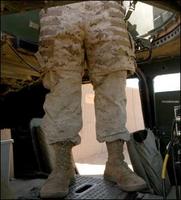 As I was reading an article from Euphoric Reality called Saving Ryan's Privates regarding new armored shorts, I was struck by their similarity to medieval armor from Europe and even Japan.
As I was reading an article from Euphoric Reality called Saving Ryan's Privates regarding new armored shorts, I was struck by their similarity to medieval armor from Europe and even Japan.  As can be seen in this image of a knight circa 1066 and the Battle of Hastings, warriors had long determined the necessity of adding protection to their upper legs and groin area. This knight is wearing a one piece chain mail hauberk that includes leg areas that are not simply a product of a split skirt on a long shirt, but actually complete enclosed legs.
As can be seen in this image of a knight circa 1066 and the Battle of Hastings, warriors had long determined the necessity of adding protection to their upper legs and groin area. This knight is wearing a one piece chain mail hauberk that includes leg areas that are not simply a product of a split skirt on a long shirt, but actually complete enclosed legs.Several other thoughts percolated as I looked at images of armor, both modern and ancient:
War, however technologically advanced materials or weapons, still depends on man to wage it. Regardless of advances, in order to win a war, there are only two options, completely destroy the enemy population (as in exterminate; nuclear) or occupy territory with men. Since even modern war requires this manpower, it is imperative that the aggressive parties retain a ready supply of men along with munitions. Since a dead man can be of no further assistance and it takes somewhere between 15 and 18 years to develop a human being that can actually serve strategic purposes (as opposed to just being cannon fodder which still needs to be replaced and cannot occupy land), it is even more imperative that the individual soldier be protected as a priceless commodity, particularly since his war experience provides the basis for future successful tactics. To this end, man has forever been attempting to create individual protection, more recently referred to as armor, since man figured out how to skin an animal and tan it's hide. With each successful attempt at reducing harm to the individual warrior, the opposing force has always spent an equal amount of time figuring out how to defeat that protection.
Second, the vulnerable areas of the body have never changed even if medicine has advanced enough to repair certain injuries, other traumatic injuries to the same areas are still deadly.
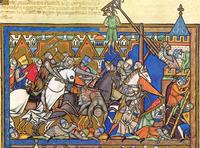
Third, the type of wounds that can be suffered do not change. They can be broadly classified into three types: blunt force trauma, penetrating wounds and amputation of limbs.
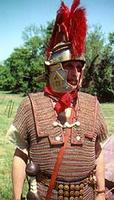
Fourth, with every evolution of armor, weapons and tactics, the armorers responsible for creating personal protection for warriors continuously "re-invent the wheel".
Roman circa 182 BC

 Rome circa 200 AD
Rome circa 200 AD ...............................Saxon-Norman circa 1066
...............................Saxon-Norman circa 1066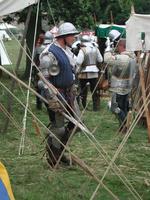
Circa 15th century
 Italian circa 16th century
Italian circa 16th century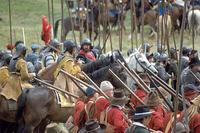
..........Cromwell's Cavalry circa 1644
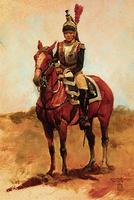
French Cuirassier Napoleonic Wars
 WWI Soldier w/simple chest plate and helmet
WWI Soldier w/simple chest plate and helmet
Personal Body Armor Vietnam also referred to as a "flak jacket"
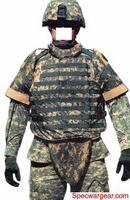 Interceptor Body Armor 2005
Interceptor Body Armor 2005
.........Armored shorts

This man would recognize his modern counterpart.
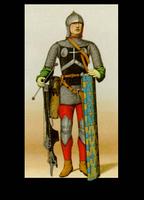 This man would certainly recognize his.
This man would certainly recognize his.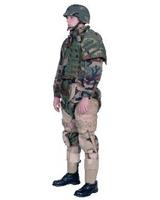
There are problems with "up armoring" men in modern manouver warfare. Mainly, the weight and the configuration can greatly reduce speed and mobility. On the other hand, when your infantry forces now rely on vehicles to speed them to their destination and the most deadly force that they will face is not necessarily a bullet but thousands of pieces of shrapnel, close up and personal, some of which actually may be derived from the vehicle they are riding in, that type of personal mobility maybe secondary to survivability. Even more so, as the enemy adapts and learns how to defeat the armor on mobile units, it becomes even more necessary to protect the individuals. Add to that the cost of casualties, not just in tactical or strategic significance, but political as well, the need for appropriate body armor becomes even greater.
New technologies may be developed to protect or defeat. New materials can be stronger and lighter. However, the wounds and the biophysics of a human remains the same thus the type and places of protection do, too. There is something that can be learned from the evolutionary history of armor even further back to the Greeks and Trojans, much less Roman or Medieval periods. Each evolution had a specific design feature meant to defeat a specific type of weapon advancement or wound whether that be from blunt weapons, sharp heavy swords or projectiles. Based on the apparent slow and painful re-invention of modern body armor, it seems clear that those involved in creating this armor need to go back and learn (if they ever did) these evolutions and reasons.
Or, the DoD or it's contractors need to hire a few historians, metallurgists and modern day metal armor makers to go along with their biophysics and engineering majors so they can learn this lesson a little faster. It's all good and well that we develop new materials to strengthen and lighten the armor, as the good armorers of the 13th and 14th centuries found when they were able to create steel plate armor beaten to within a 1/4th of an inch yet still able to perform it's primary duty. but, aside from articulation, the engineering and design of the armor itself provided additional protection.
In part II of "re-inventing the wheel", we will review the evolution in the specific design of both the armor and the weapon it was meant to defeat and how it might apply to modern body armor.
Thank you Mudville Gazette for the link.
Posted by Kat at 1:27 AM 8 comments Tweet



















